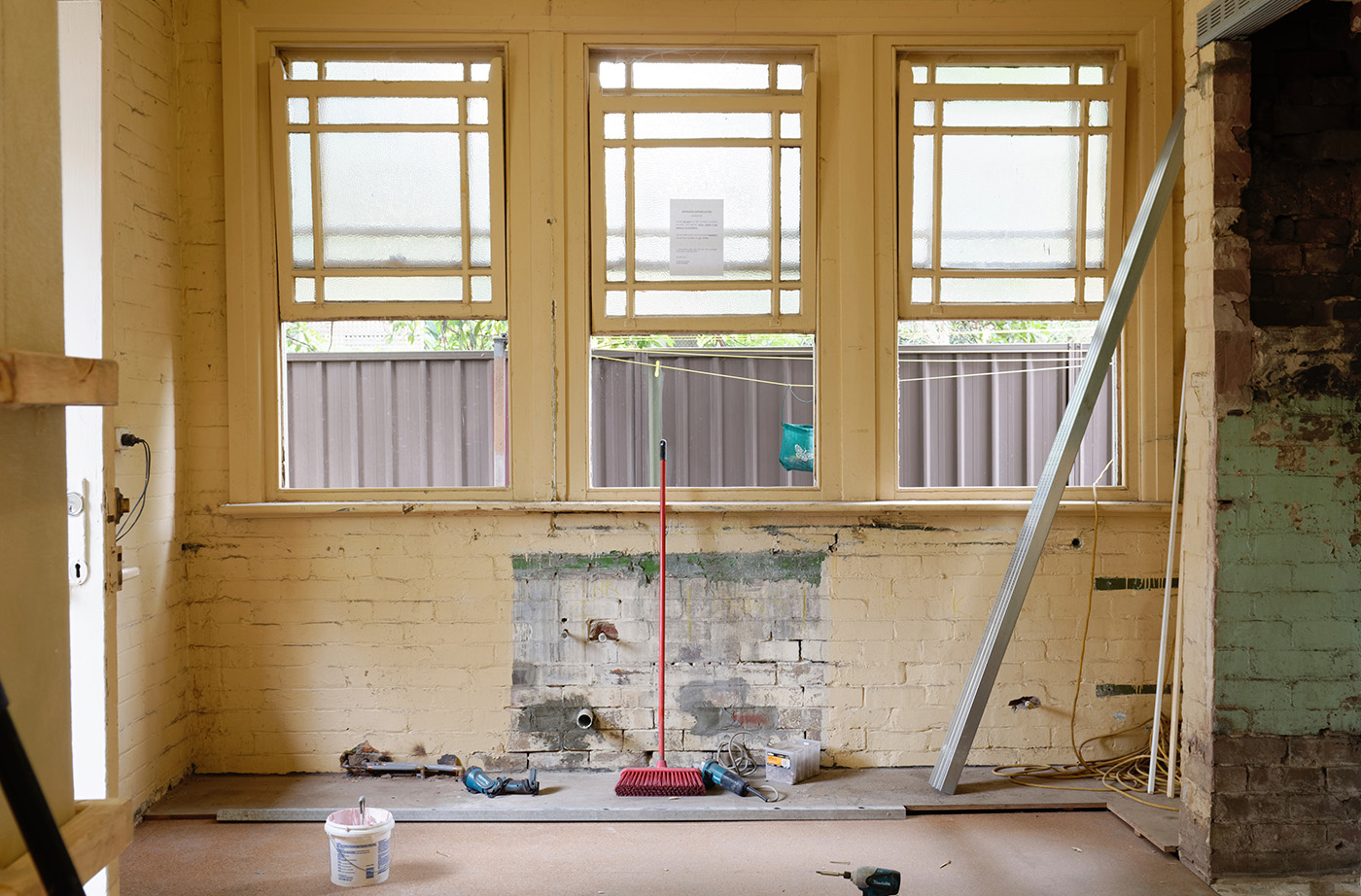Asbestos
Everything You Need To Know About AsbestosAsbestos Quick Links

Asbestos 101
All You Need To Know About Asbestos – From Chrysotile Asbestos Removal In Auckland To Commercial Asbestos Disposal In Waikato And Everything In Between
A Brief History Of Asbestos
Asbestos has been used for thousands of years. Archaeologists believe people living in the Stone Age (about 750,000 years ago) used Asbestos in candle and lamp wicks.
Approximately two and a half thousand years ago in Finland, people used Asbestos to strengthen clay pots and make them heat-resistant. Ancient Greeks and Romans wove Asbestos into material for shrouds, tablecloths and napkins.
Even then, they knew Asbestos was harmful. Strabo, a Greek geographer, noticed slaves weaving Asbestos into cloth had ‘sickness in the lungs’. Pliny the Elder wrote about a crude respirator, made from goats’ or lambs’ bladders, that Asbestos miners wore over their faces to try and protect themselves from airborne fibres.
During the Industrial Revolution, Asbestos was mined and manufactured in massive amounts. People liked it because it was ‘flameproof’, waterproof and resistant to chemicals and electricity. Most importantly, it was malleable – an excellent product for insulating boilers and engines, and for building and binding things.
Once Asbestos mining became mechanised, it became a cheap and widespread product, found in a wide range of household and workplace products, including linoleum. However, the link between Asbestos and ill health was not thoroughly investigated until the early 20th century.
What Is Asbestos?
‘Asbestos’ is a term describing naturally occurring fibrous silicate minerals (rock-forming minerals). There are two groups, and six common types:
White Asbestos was the most common form of Asbestos used in New Zealand, followed by brown Asbestos, and blue to a lesser extent.
White Asbestos
Under a microscope, white Asbestos looks different from brown and blue Asbestos.
White Asbestos has long, curly fibres, which are flexible enough to spin and weave into fabric. Its versatility made it the most common type of Asbestos in building and household products.
Brown Asbestos
Brown (amosite) Asbestos has harsh, spiky fibres. It was mostly mined in Africa, and was often used in Asbestos cement sheet and pipe insulation. It was also used in insulating board, ceiling tiles and thermal insulation. Our skilled contractors specialise in all types of amosite asbestos removal and disposal.
Blue Asbestos
Blue Asbestos is known for its excellent heat resistance and ability to repel water. It was mostly mined in South Africa, Bolivia and Australia. In South Africa it was called ‘woolly stone.’ It has straight, thin, blue fibres.
Blue Asbestos was used to insulate steam engines, and is also found in some spray-on coatings, pipe insulation and cement products. It is brittle, and products containing blue Asbestos often malfunction. This increases the potential of airborne Asbestos exposure for people doing maintenance, repair and replacement work.
Blue Asbestos is claimed to be the ‘most dangerous Asbestos’ because its fibres are so thin. This makes them easy to inhale and lodge in the linings of a person’s lungs. However, all types of Asbestos should be treated with equal caution, because all of their fibres can be inhaled into the lungs.
The Condition Of Asbestos Containing Materials (ACM)
Most ACM should not cause a health risk unless it is abraded or machined. These processes release ACD.
ACM degrades with age, chemical exposure, the weather, water damage, lichen growth or moving construction materials. Birds and rodents may also disturb ACM. This can make Asbestos and ACM friable.
Friable Asbestos or ACM is Asbestos or ACM in powder form, or able to be crumbled, pulverised, or reduced to a powder by hand pressure when it is dry. This is the riskiest condition for Asbestos or ACM to be in.
Non-friable Asbestos or ACM is, as the phrase suggests, not friable. Non-friable Asbestos or ACM is usually safer than friable Asbestos or ACM, because Asbestos fibres bond into the product. However, non-friable ACM is likely to release fibres if it is disturbed or manipulated.
A competent person should determine whether ACM is friable or non-friable.
When deciding if Asbestos or ACM is present in soil, and therefore whether work involving the soil is Asbestos-related or Asbestos removal work, a competent person must make the determination. This is likely to be a SQEP.
The condition of identified Asbestos should be recorded in the Asbestos management plan and reviewed.
Exposure to friable Asbestos can be dangerous to your health. Given the risks associated with Asbestos fibre, removing Asbestos containing materials from your home or business is best left to a professional Asbestos removal contractor. It is also why there are such strict laws around removal as well as disposal of Asbestos products.
Asbestos & New Zealand
Officially, Asbestos awareness in New Zealand started in the 1930s. In 1938, the Report of the Interdepartmental Committee on Silicosis linked Asbestos with deadly lung conditions. The government report said Asbestosis is a disease similar to silicosis, and Asbestos is capable of producing a ‘deadly pulmonary disease.’
Asbestos & Its Use Across New Zealand
Many New Zealand workers were exposed to Asbestos in railway workshops, in the building industry, shipping, sawmilling and Asbestos cement industries. Wharf workers unloading Asbestos from ships, fitters, electricians, boiler workers, carpenters, brake repairers and others were also exposed to Asbestos.
Raw Asbestos was first imported into New Zealand in the late 1930s. It was used to make products that comprised of Asbestos mixed with cement. These products were manufactured until the mid-1980s.
In 1938, a factory opened in Auckland’s Penrose that produced Asbestos cement products. It continued manufacturing asbestos cement products until the mid 1980’s. At its peak production time (the mid-1970s), the factory employed up to 600 workers at any one time. They worked with white, brown and blue Asbestos.
A factory that manufactured ACMs opened in Riccarton, Christchurch in 1943 and closed in 1974. It is estimated that between 900 and 2,000 workers were employed over the factory’s lifetime.
New Zealand’s first Asbestos Regulations did not come into effect until 1978.
The Asbestos Ban
It became illegal to import blue and brown Asbestos into the country in its raw form from 1984. Asbestos-containing products (also known as ACMs) in New Zealand at the time were used until supplies ran out.
On 1 October 2016, it became illegal to import Asbestos-containing products into New Zealand.

Identifying Asbestos
Asbestos In Building Materials
Buildings built, altered or refurbished from 1940 until the mid-1980s are likely to contain ACMs. Post-war production and the beginnings of local manufacturing created a significant increase in raw Asbestos imports.
Over 2,000 tonnes were imported every year in the late 1940s. This increased to 5,000 tonnes in the 1960s and 1970s, with the largest amount recorded at 12,500 tonnes in 1975.4 Buildings built after 1 January 2000 are less likely to contain ACMs, but some buildings built after this time may contain ACMs.
Asbestos In The Workplace
Until the mid-1980s, Asbestos was often used as a fire retardant and insulation.
Examples include:
- Insulation Board
- Friction Linings
- Fire Doors
- Gas Or Electric Heaters
- Fuse Boxes
- Gaskets
- Lagging Around Pipes
- Sprayed Insulation
- Brake Linings
Glossary
Abbreviations, Terms & Phrases
Accredited Testing Laboratory
A laboratory accredited by International Accreditation New Zealand (IANZ) or any other accreditation regime recognised by WorkSafe New Zealand to test for the presence of asbestos. For accredited testing laboratories, refer to IANZ or WorkSafe New Zealand.
ACD
Asbestos-contaminated dust or debris. Meaning dust or debris that has settled and is or is assumed to be contaminated with asbestos. In the guidelines, FA/AF is used in its place.
ACM
Asbestos-containing material (typically comprising bonded cement board).
ACOP
Approved Code of Practice: Management and Removal of Asbestos.
AF
Asbestos fines. Includes free fibres of asbestos, fibrous asbestos, small fibre bundles and also ACM fragments that pass through a 7 x 7 mm sieve for field screening and 10 x 10 mm sieve in the laboratory. The measurement of AF in soil is completed by an IANZ accredited laboratory.
Airborne Contamination Standard
An average concentration over
ALGA
Australasian Land and Groundwater Association (ALGA) Ltd.
Asbestos Regulations
The Health and Safety at Work (Asbestos) Regulations 2016.
Background Concentrations
The naturally occurring, ambient concentrations of substances in the local area of a site.
Bonded ACM
Where asbestos is bound in a matrix such as cement and there is minimal free fibre present.
Class A Removal
Work involving asbestos that requires a Class A licensed asbestos removalist, such as work involving friable asbestos.
Class B Removal
Work involving asbestos that requires a Class B licensed asbestos
CLMGs
Contaminated Land Management Guidelines.
Competent Person
Under the Asbestos Regulations, a competent person is a person who has acquired, through training and experience, the knowledge and skills of relevant asbestos removal industry practice including through holding one of the qualifications listed by WorkSafe New Zealand. A competent person may only conduct air monitoring and clearance inspections in relation to
Conceptual Site Model (CSM)
A system diagram of the site and any contamination. It shows current conditions, the distribution of contamination and how it might be released and transported to those who may be affected by it. It can be supported by maps and drawings. In simple terms, it tells you what is going on at the site and helps to inform everyone involved in the work. It helps to guide initial investigation work, and it is added to as more information is found.
Detailed Site Investigation (DSI)
Detailed site investigation as defined in regulation 3 of the NES-CS as: “an investigation that:
- Is done by a suitably qualified and experienced practitioner; and
- Is done in accordance with the current edition of Contaminated Land Management Guidelines No. 5 – Site Investigation and Analysis of Soils, Wellington, Ministry for the Environment; and
- Is reported on in accordance with the current edition of Contaminated Land Management Guidelines No. 1 – Reporting on Contaminated Sites in New Zealand, Wellington, Ministry for the Environment; and
- Results in a report that is certified by the practitioner.
A detailed site investigation involves intrusive techniques to collect field data and soil samples for analytical testing to determine the concentrations of contaminants of concern.”
f/mL
Fibres per millilitre of air.
FA
Fibrous
Fibre
Typically, a respirable fibre is less than 3 μm in width, greater than 5 μm in length and has a
Friable
Asbestos that is in a powder form or able to be crumbled, pulverised or reduced to a powder form by hand pressure when dry (textile material, gaskets and asbestos insulation board are likely to be found in a friable condition). Non-friable asbestos can become friable with age and if handled incorrectly.
GRWM Regulations
The Health and Safety at Work (General Risk and Workplace Management) Regulations 2016.
HAIL
Hazardous Activities and Industries List, administered by the Ministry for the Environment. This is a compilation of activities and industries that could be considered to cause land contamination resulting from hazardous substance use, storage or disposal.
Independent Licensed Assessor
Under the Asbestos Regulations, an independent licensed asbestos assessor is a person who is licensed by WorkSafe New Zealand to conduct air monitoring and clearance inspections for friable and non-friable asbestos projects.
For asbestos in soil, the role of an independent assessor is to provide support to high-risk remedial projects (involving friable asbestos), undertake air monitoring and provide clearance on Class A removal work under regulation 41 of the Asbestos Regulations.
Licensed Asbestos Removalist
Under the Asbestos Regulations, this is a PCBU with a Class A or Class B licence for asbestos removal. It should be noted that, for asbestos-contaminated soil, work should be completed in collaboration with
LIM
Land Information Memorandum.
Mesothelioma
Cancer of the lining of the lungs.
NES-CS
Resource Management (National Environmental Standard for Assessing and Managing Contaminants in Soil to Protect Human Health) Regulations 2011.
Non-friable
In relation to asbestos or ACM, means not friable (and, for the purposes of this definition, asbestos and ACM include material containing asbestos fibres reinforced with a bonding compound”.
PCBU
PPE
Personal protective equipment, which includes face masks, respirators, eye protection, disposable coveralls and so on.
Preliminary Site Investigation (PSI)
Preliminary site investigation as defined in regulation 3 of the NES-CS, as: “an investigation that:
- Is done by
a SQEP ; and - Is reported on in accordance with the current edition of CLMG 1; and
- Results in a report that is certified by the practitioner.
A PSI is often referred to as a desktop study because it does not usually involve sampling and analysis of the soil. The main objectives of a PSI are to gather information about a piece of land to determine whether it may potentially be contaminated, to assess the suitability of the land for its current or intended land use and to design a DSI (if required).”
Receptor
A person or other organism or ecological system that may be harmed by asbestos.
Receptors can include remediation workers, site occupiers, site visitors and people living close by.
Respirable Asbestos Fibre
The Asbestos Regulations define this as a particle of asbestos that is up to 3 μm in width and is greater than 5 μm in length and has a length-to-width ratio greater than 3:1. These fibres are small enough to penetrate into the area of the lung where they can be extremely harmful.
SQEP
Suitably qualified and experienced practitioner (soil). Depending on the nature and level of work,
If
The Act
The Health and Safety at Work Act 2015.
The Regulations
The Asbestos Regulations and the GRWM Regulations (together).
Trace Level
An average concentration over any 8-hour period of less than 0.01 respirable asbestos fibres per millilitre of air.
Unlicensed
Work involving asbestos that does not require a licensed asbestos removalist.
Virgin Natural Material (VNM)
Natural material (such as clay, gravel, sand soil or rock fines) that have been excavated or quarried from areas that are not contaminated with manufactured chemicals or with processed residues as a result of industrial, commercial, mining or agricultural activities.
Workplace PCBU
A PCBU who manages or controls a workplace.
Request an Appraisal
If you have concerns about asbestos at your property or commercial building, or require commercial asbestos encapsulation or disposal, leave your details with us and our certified asbestos experts will be in touch to discuss the likelihood of any asbestos hazards and the appropriate steps to take.


